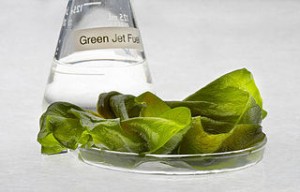 In a country that is working to establish energy independence, every energy possibility is being thoroughly explored in the hopes of finding oil’s replacement. Wind and solar face issues with being incorporated into the national electricity infrastructure and still don’t provide as much electricity as they could. With as much attention as electricity-generating energies like wind and solar get from the media, exciting and yet less glamorous possibilities like algal biofuels fall by the wayside.
In a country that is working to establish energy independence, every energy possibility is being thoroughly explored in the hopes of finding oil’s replacement. Wind and solar face issues with being incorporated into the national electricity infrastructure and still don’t provide as much electricity as they could. With as much attention as electricity-generating energies like wind and solar get from the media, exciting and yet less glamorous possibilities like algal biofuels fall by the wayside.
One of the most promising characteristics of algal biofuel production is the rapid rate of cell reproduction that occurs, making algal biofuel production one of the fastest ways to produce electricity. There are some other unique benefits to using algae as a source of energy. It produces fifteen times more oil than any other organic material used to produce energy, and there are viable alterations that could be made to the process that could bump that number from 15 percent to 40 percent. Increasing the input of carbon dioxide and organic materials would send oil production into overdrive while providing a new outlet for waste disposal.
Scientific Process
Algae intake carbon dioxide as fuel and release oxygen back into the air. One of the most exciting byproducts of this process is oil. Because algae reproduce so rapidly, it is not a question of maximizing how much oil the algae produces. Rather, the main problem is accessing the oil that is produced. Manufacturers work to produce as much algae as possible, and then use one of two processes to extract the oil. Oil presses can gain access to about 75 percent of the oil that is produced by the algae while being the simplest way to do so. Hexane solvent methods are vastly more efficient, accessing 95 percent of the oil that is produced. Oil is squeezed out of the algae, as occurs when using the oil press. Afterwards, the algae is mixed with hexane and cleaned, scrubbing the last of the oil out of the algae.
These are simply the most common ways to remove oil from algae; there are several additional options that could extract 100 percent of the oil that is produced. Something called the supercritical fluids method can access 100 percent of the oil that algae reproduction creates. Select substances can be used to change the composition of elements from liquids to gas, and in this process carbon dioxide is used to turn algae into oil. While this increases the oil yield, it is the most costly and cumbersome extraction method, and thus predictably far less common.
Harness the power of the sun for your energy needs…
Water Waste
While algal biofuels produce more oil than other organic options like corn, switch grass, and the like, it uses far more water than any alternative. There is some controversy within the field about the veracity of these studies, and they may rely on outdated data because of the highly secretive nature of the algal biofuel industry. Successful production of algal biofuels requires a massive, continuous input of fresh water. Like natural gas extraction, the amount of water involved in production is so high that it should (and currently does) serve as a credible deterrent to wide-scale production. Algae grows in pools of water, making ponds a natural choice, but production also requires large input of fertilizer and CO2, which often ruins the water supply. As with other sources of environmentally draining energy production, algae is receiving a lot of criticism from those concerned about the environmental impact, especially in context of the drought that much of the country is experiencing. While new sources of energy are vital to replace oil, they cannot come at the cost of access to water sources.
Predictably, algal biofuel manufacturers are searching for a solution to this problem, and many of the grievances related to water use for algal biofuel production can be solved by simply relocating algal production plants. Locating algal biofuel production near waste management facilities or sewer drainage areas provides the CO2 required for production and cleans up waste, rather than contaminating fresh water supplies.
Possibility Of Home Production
Manufacturers are struggling with making algal biofuels viable in terms of mass production, but there is the very real possibility that homeowners or local communities could invest in algal biofuel production. Because production is relatively simple—requiring little more than sunlight, water, and a steady source of carbon dioxide—it would be easy enough to start algal production in local areas that contain high concentrations of sewage or waste.
Companies are focusing their efforts on closed-circuit production in order to make algal biofuel an option for powering the electrical grid as a whole. For home or community-oriented production, open pond algal growth is a far more affordable option. It is the conventional means of producing algae and easy enough to establish in new areas. It is one of the most flexible forms of energy production, and that is perhaps the most relevant factor for those who are looking for viable forms of energy production to invest in for home use. Algae can adapt to almost any situation. You can use clean water, saltwater, or contaminated water with little to no impact on the success of energy production, and a large energy plant is not necessary to successfully manufacture an algal biofuel. The most daunting aspect of a home algal fuel production venture would be accessing the oil produced. Simple methods of oil extraction (such as using an oil press) have the highest chance of success in a small home or community-oriented setting. This does trade off with high oil yield, but it establishes algal biofuels as a viable option for local alternative energy production.
The verdict on algal biofuel production on a national scale—powering the transportation industry or electricity grid—is still out, and many accommodations will have to be made to current production methods in order to lower production costs and increase oil yields. Small-scale production, however, is exempt from many of these feasibility issues, as algal production has proven to be quite efficient in smaller, more contained operations.
©2012 Off the Grid News
 Off The Grid News Better Ideas For Off The Grid Living
Off The Grid News Better Ideas For Off The Grid Living




